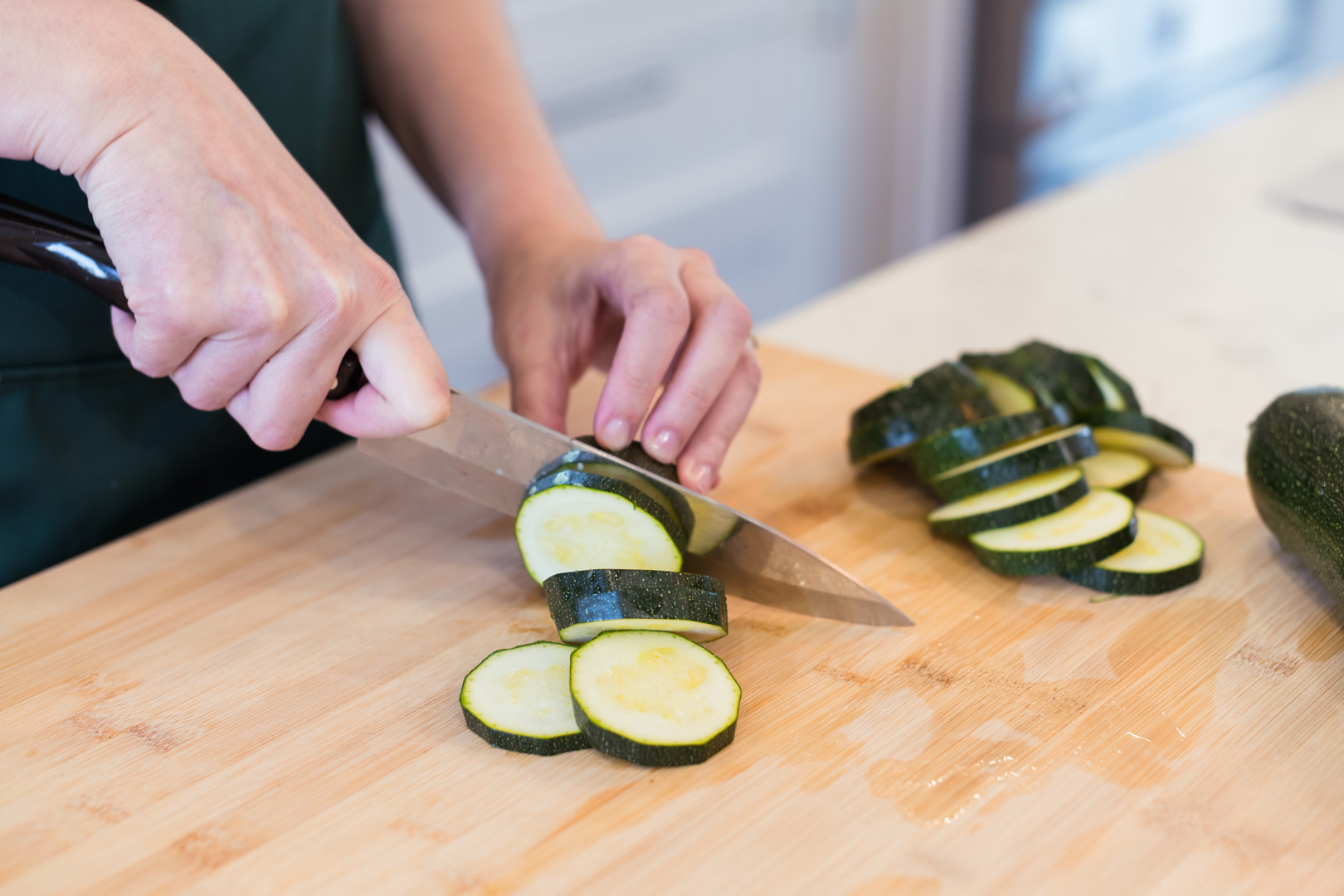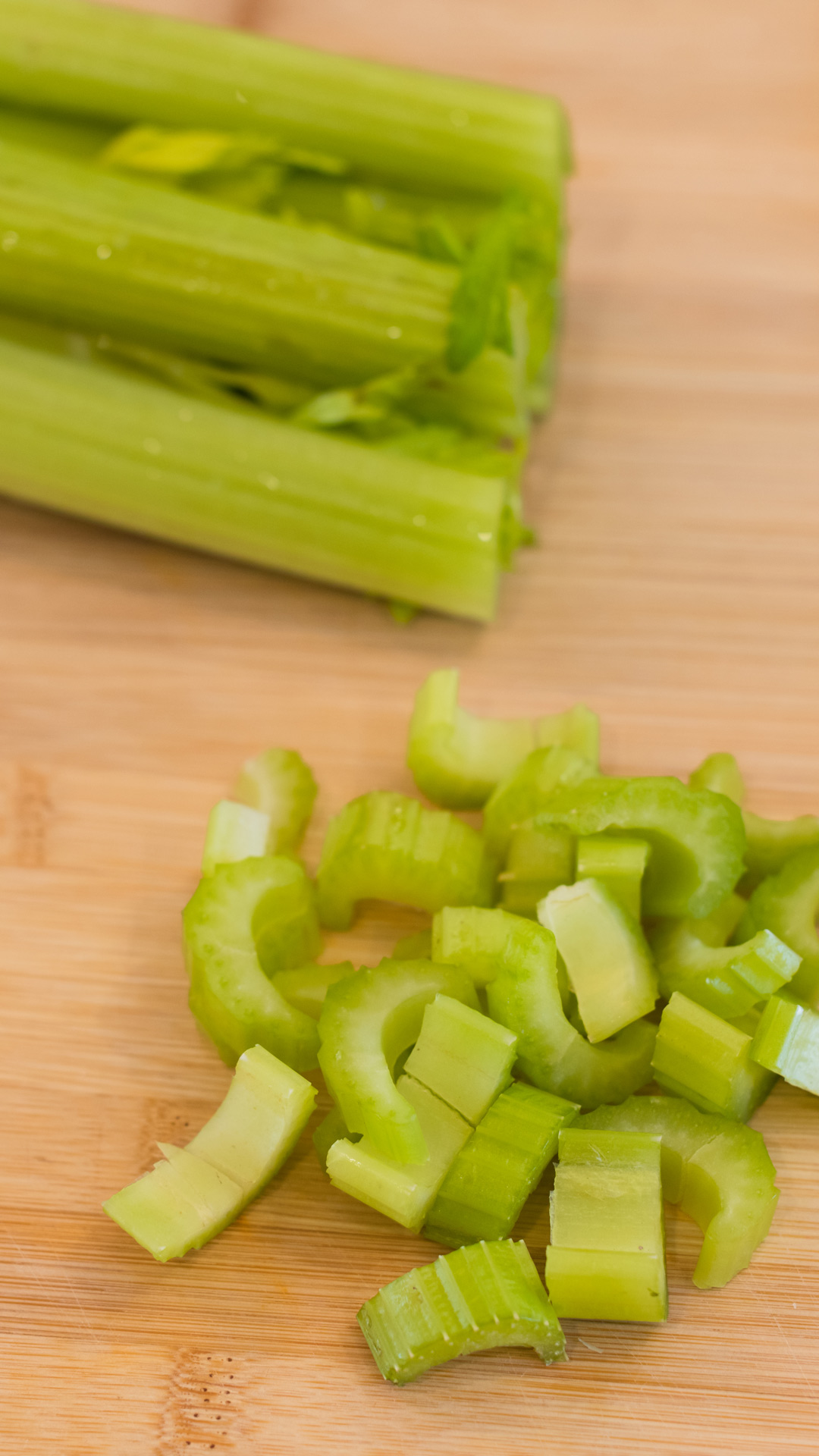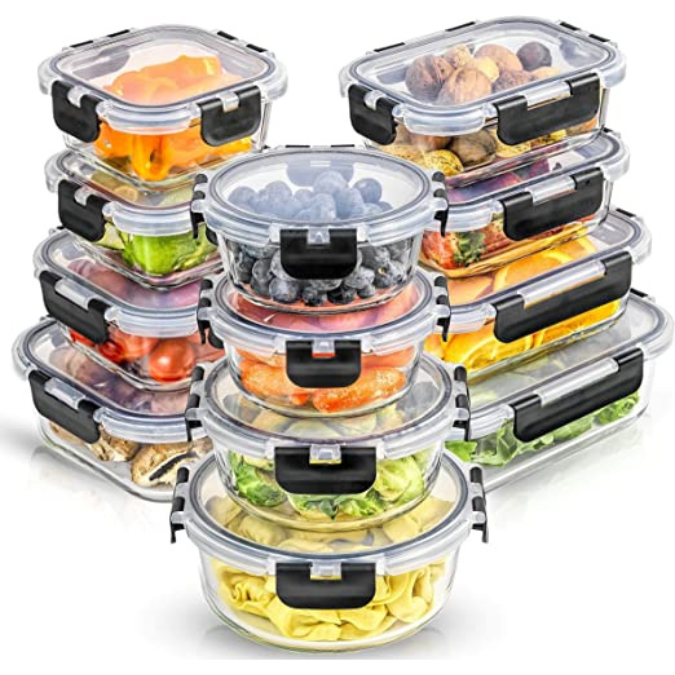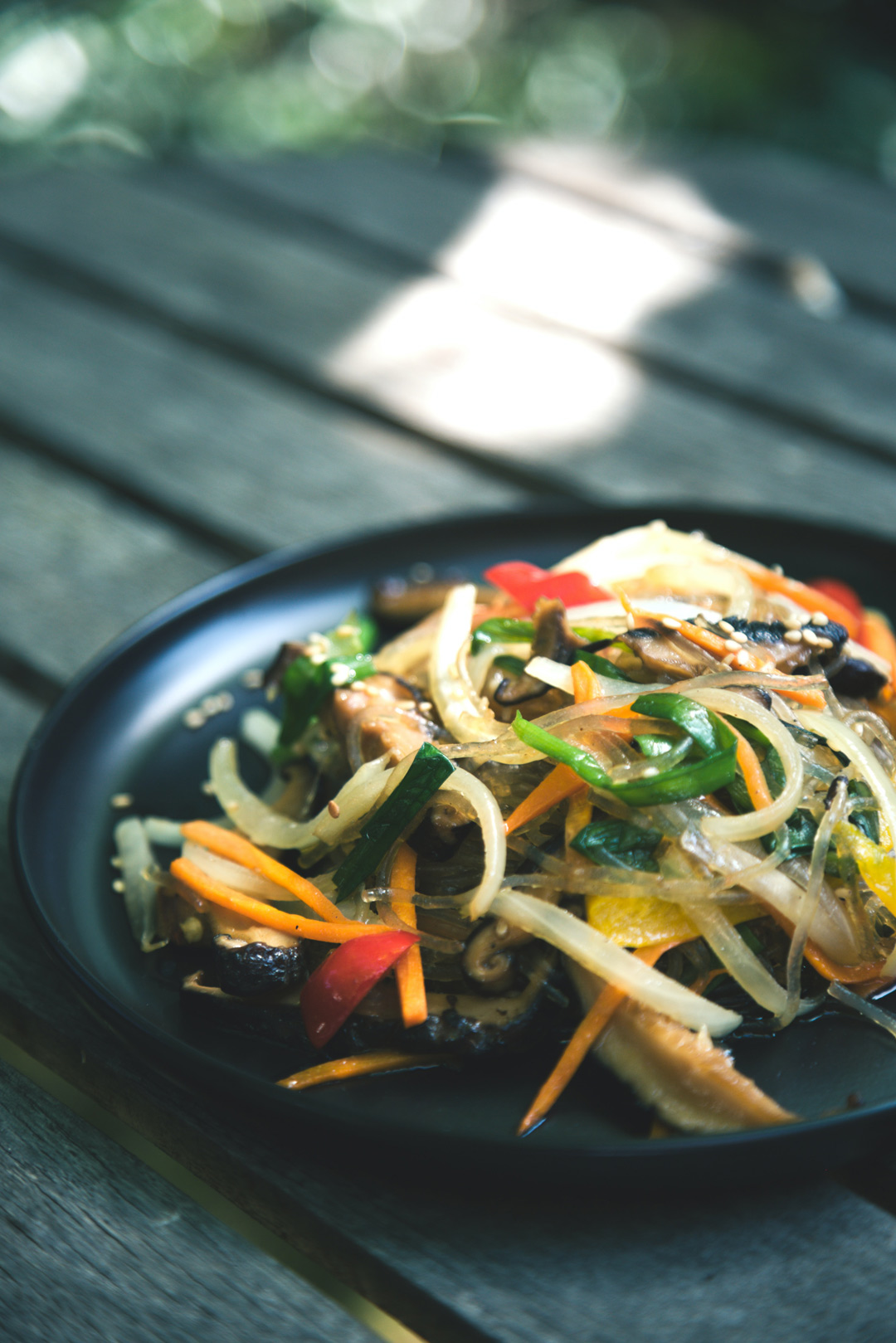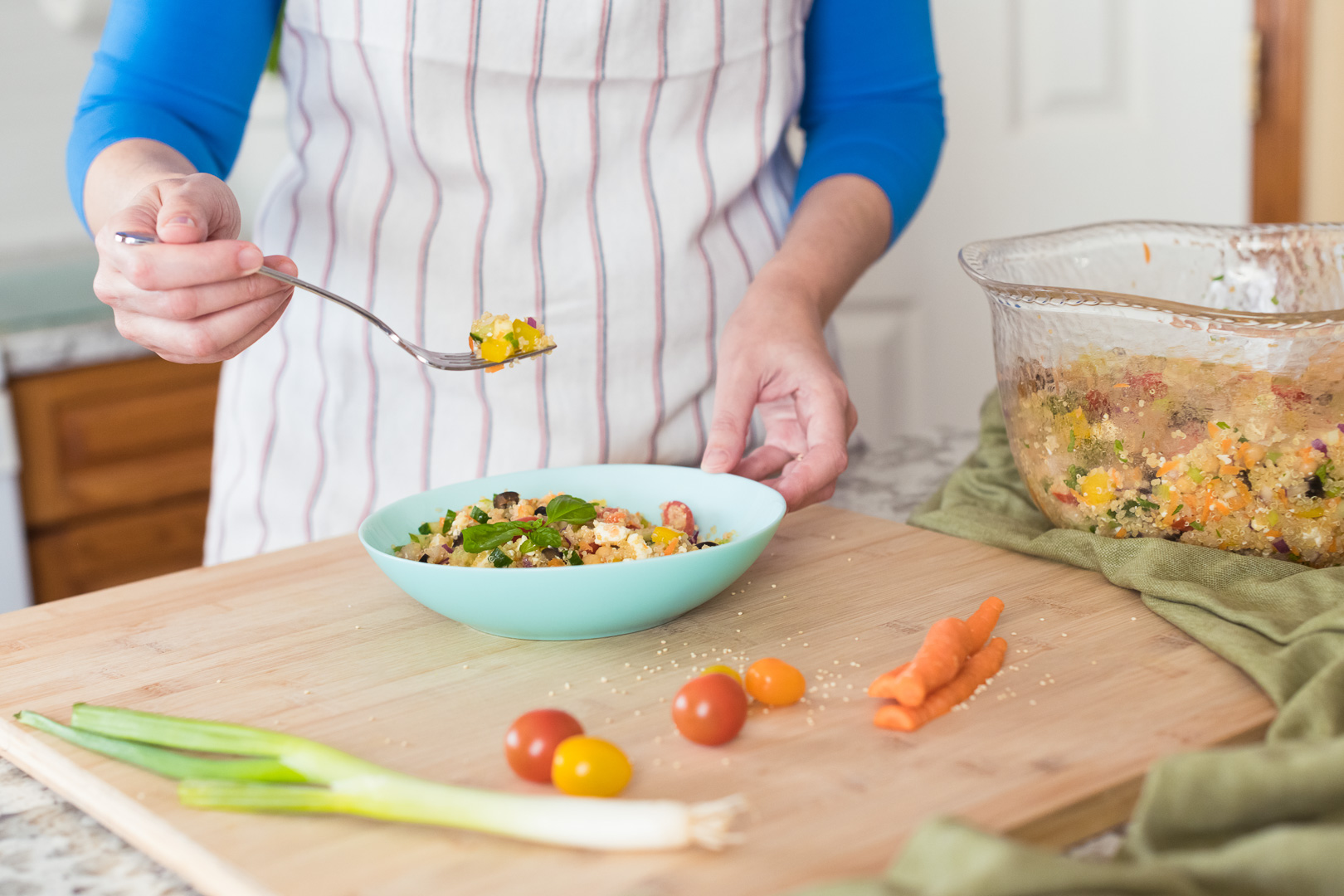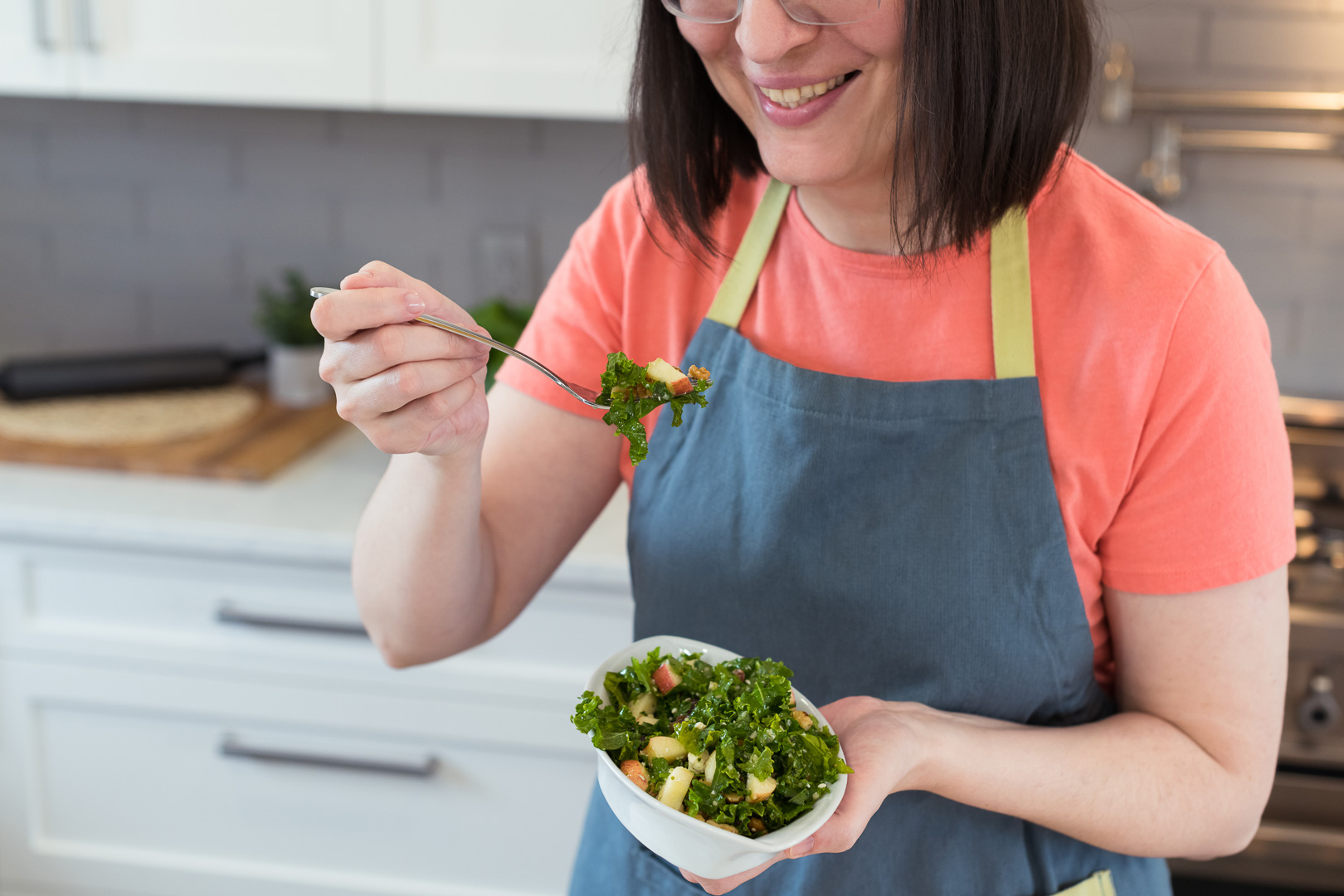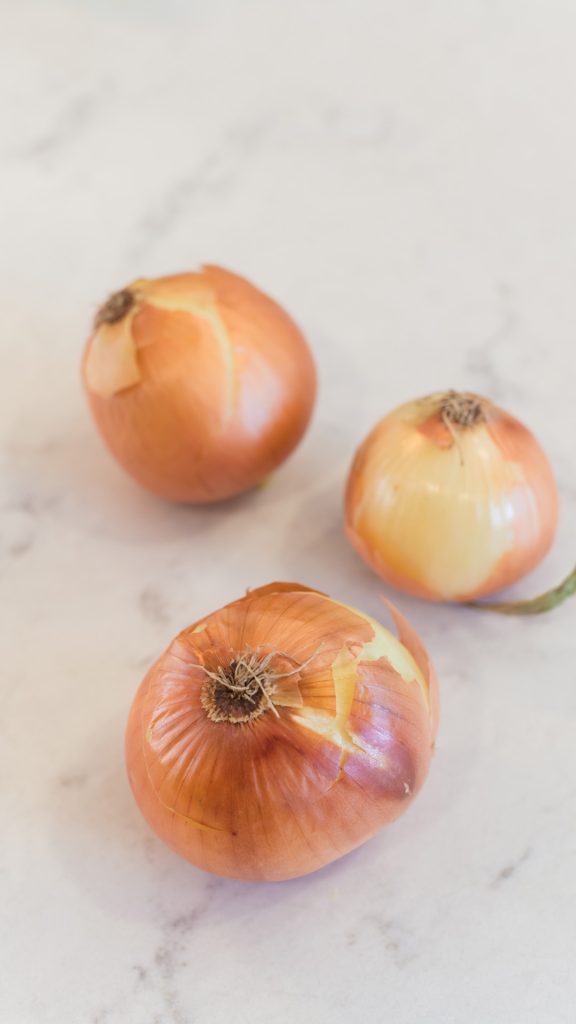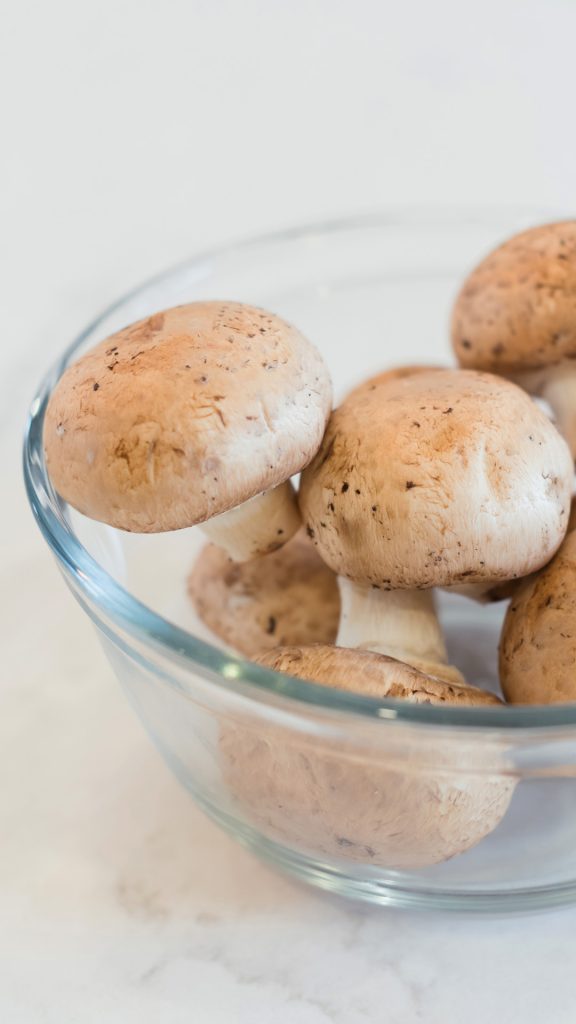Let’s continue our journey to adding more vegetables in your diet. I hope you enjoyed the first 5 ways to include more vegetables in your meals and are ready for 5 more tips and tricks.
6. Include more vegetables in smoothies
Adding vegetables to smoothies is a great way to sneak in extra nutrients without compromising the taste. While fruits are commonly used in smoothies, vegetables can also contribute valuable vitamins, minerals, antioxidants and fiber.
This earthy delight smoothie has spinach, but you can swap it with kale, arugula or Swiss chard. They each blend well and provide a big nutritional boost.
If you’re new to adding vegetables to smoothies, begin with mild-tasting options like spinach, zucchini, celery or cucumber. As you get used to the flavors, you can experiment with more assertive veggies like beets, broccoli or radishes.
Another way to mask the taste of stronger veggies is to pair them with fruits that have intense flavor. For example, spinach can be blended with berries and kale with pineapple.
Another tip to balance out the earthy taste of some vegetables is to add dates, cinnamon or vanilla extract. You can also experiment with adding small amounts of spices like ginger or herbs like parsley or mint.
7. Prep veggies in advance
Prepping your vegetables in advance is a great way to eat them throughout the week. This can save you a significant amount of time during a busy week by simply being able to grab pre-cut veggies from the fridge and using them in various meals.
Prepping vegetables ahead of time also helps you use them before they spoil, which in turn helps you save money and make healthier choices. When we’re hungry and short on time, having veggies on hand makes it easier to whip up a nutritious meal instead of reaching for less-than-ideal options.
Prep a variety of vegetables so you have options for different meals and recipes throughout the week.
Try to prep your vegetables on a day when you have some free time. This could be during the weekend or on a less busy evening. Choose a time that works best for you and when you are more likely to do it.
Wash vegetables thoroughly before cutting or chopping them. Make sure to dry well to prevent moisture from causing them to go bad quickly.
Some vegetables hold up better to prepping in advance than others. Vegetables like carrots, bell peppers, broccoli, cauliflower and cucumbers tend to stay fresh and crisp longer after being cut, when compared to tomatoes, zucchini or leafy greens for example.
When prepping vegetables that you’ll be cooking later, such as for stir-fries, slightly undercook them during the prep stage. This way, they won’t become mushy when you continue to cook them.
Store your prepped vegetables in airtight containers or resealable bags in the refrigerator (we love these ones). You can also use containers with compartments to keep different veggies separated. Do you have any favourite storage containers?
If you’re prepping a variety of vegetables, it might be helpful to label the containers with the type of vegetable and the date you prepped them. This can help you keep track of their freshness and help you plan which ones to eat first.
8. Experiment with different cooking methods
Experimenting with different cooking methods can make a big difference in the flavor and texture of your vegetables.
Roasting vegetables in the oven at a high temperature (around 400-450°F or 200-230°C) caramelizes their natural sugars, resulting in a deliciously crispy and flavorful exterior. You can roast a wide variety of vegetables, including potatoes, carrots, broccoli, Brussels sprouts and more. Drizzle with a bit of olive oil, sprinkle with your favorite herbs and spices, and spread them out on a baking sheet before roasting.
Steaming vegetables involves cooking them over boiling water. This method helps retain the vibrant colors and nutrients of the vegetables. Use a steamer basket or simply place vegetables in a microwave-safe dish with a little water, cover and microwave until tender.
Sautéing involves cooking vegetables quickly in a small amount of oil over high heat.
Stir-frying is a similar method to sauteing often used in Asian cooking. Both methods result in tender, yet slightly crisp vegetables with a rich flavor. Use a mix of vegetables like bell peppers, onions, carrots and snap peas and stir-fry them with your choice of sauce.
Grilling vegetables on a barbecue or indoor grill can impart a smoky flavor and beautiful char marks. Marinate the vegetables with herbs, olive oil and your preferred seasonings before grilling.
Blanching involves briefly boiling vegetables and then immediately transferring them to ice water to halt the cooking process. This method helps maintain the vegetables’ vibrant colors and crispness. It’s often used as a preparatory step before freezing or using vegetables in salads.
Boiling is one of the simplest methods, but it’s important not to overcook the vegetables, as they can become mushy and lose nutrients. Boil vegetables in lightly salted water until they are tender, but still retain some texture.
Some vegetables are delicious when enjoyed raw. For instance, carrots, cucumbers, bell peppers and cherry tomatoes make for crunchy and refreshing snacks or additions to salads, such as this chicken salad recipe with grapes and pecans.
9. Add veggies to other dishes
Grate vegetables like zucchini or carrots and add them to dishes like meatloaf, muffins, cakes or pancakes for an extra nutritional boost.
10. Try new recipes that feature vegetables as the main ingredients
Experimenting with new recipes is a fun and creative way to include more vegetables in your meals. Trying new recipes can ignite (or reignite) your interest in cooking and make meal preparation more enjoyable.
Look for recipes online, in cookbooks or on cooking websites that specifically focus on vegetables. Pinterest, food blogs (like this one 🙂) and Instagram are great sources for finding amazing recipes.
Try dishes from various cuisines that traditionally use a lot of vegetables. For example, explore Mediterranean, Asian, Middle Eastern and Indian cuisines.
Visit local farmers’ markets to discover seasonal vegetables and get inspiration for recipes.
Consider taking cooking classes focused on vegetable-centric dishes. This can be a fun and educational way to learn new techniques.
Aim to try at least one new vegetable-centric recipe each week (we recommend starting with this amazing kale salad!) This gradual approach makes it manageable and keeps things exciting.
Don’t hesitate to adapt recipes to suit your preferences or use what you have on hand. Recipes are often flexible. If the recipe doesn’t mention options for substitutions, ask the author. I am sure that many of them would be happy to help out.
If you notice any interesting recipes on this blog, please don’t hesitate to ask for help if you have questions. I would be very happy to offer it!
Bonus tips to eat more vegetables!
1. Embrace home gardening
If you have the space and the inclination, consider growing your own vegetables. Watching your harvest grow can inspire you to experiment with creative cooking ideas.
2. Rediscover Flavors
Be open to revisiting vegetables you may not have enjoyed in the past. Try preparing them using different cooking methods or flavor combinations. Your perception might change or your tastes may have evolved over time.
3. Spread Culinary Inspiration
Share newfound vegetable-based recipes with your friends and family. Your enthusiasm can inspire them to incorporate more vegetables into their diets as well.
4. Document Your Culinary Adventures
Keep a record of recipes you love, along with any tweaks you’ve made, so you can easily recreate your favourite dishes in the future.
5. Remember
The end goal is to make cooking and eating vegetables an enjoyable and sustainable part of your routine.
What are your tips that help you eat more vegetables? Please share them below!

